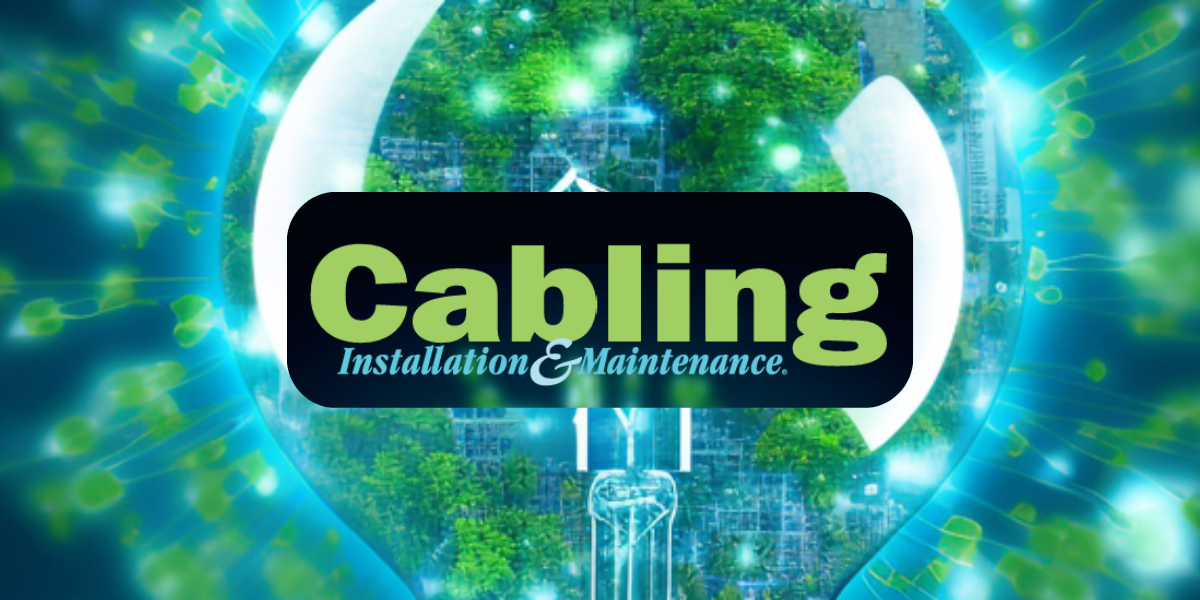Provisioning and Troubleshooting Tips for the Data Center
Part 3 of a 3-part Series This is part 3 of a 3-part series. To view the previous 2 parts, click...
-1.png)
Part 2 of a 3-part Series
This is part 2 of a 3-part series. To view Part 1, Common Data Center Cable Plant Designs, click here.
Data centers are constantly evolving to meet the needs of the business it serves. These evolutionary changes not only relate to infrastructure hardware and software, but the data center cable plant as well. Two notable additions to the data center as of late are multi-gigabit over twisted-pair copper and the proliferation of Power over Ethernet (PoE) operated devices. Both offer significant benefits to organizations as long as their integrations are carefully handled. One way to smooth over any implementation issues is to ensure that copper cabling can handle the added speeds and power delivery requirements. Let’s review some of the potential cable-related pitfalls of these technologies and how to best prepare for them.
Multi-gigabit Ethernet over copper in the data center
The use of multi-gigabit Ethernet over twisted-pair copper cabling has become a popular physical transport choice in the data center over the past decade. This is due to the relatively low deployment cost and ease of cable management -- especially for data centers that are designed for top-of-rack network connectivity.
Because data transport speed and reliability are so important within the data center, it’s necessary to understand that copper cabling is far more sensitive to internal and external interference when operating at speeds over 1Gbps. Thus, cabling that may operate reliably at 1Gbps can succumb to noise when transmitting or receiving at higher speeds. Too much noise results in frame or packet retransmissions which is a significant cause of performance degradation.
To get an accurate assessment of how well your copper plant will operate at the types of speeds being demanded within enterprise data centers, a signal-to-noise ratio (SNR) test using a tool such as the AEM TestPro or NSA is highly recommended. An SNR test measures the strength of a transmitted signal against signal interference that penetrates into the cable in question. This interference is often referred to as noise and can come from a host of sources including adjacent cabling, light fixtures or other electronic devices near the cable path. From a measurement standpoint, the closer an SNR reading is to zero, the worse the transmission reliability. As a rule, SNR should read 3 dB or higher to overcome most noise interference. If SNR readings are recorded to be below the recommended value, it can cause performance and reliability issues for data traversing the cable. In these cases, identifying the source of the external interference – or replacing existing cabling with a higher category standard -- can bring SNR readings back to acceptable levels.
PoE in the data center
There’s been a great deal of discussion and fanfare surrounding Internet of Things (IoT) platforms that are often deployed throughout buildings, manufacturing plants, warehouses and campuses. That said, little has been written or discussed regarding the impact of IoT devices deployed inside the data center. Common examples include temperature/humidity sensors, surveillance cameras and door controllers. In many cases, these devices and sensors require PoE – a technology that historically has not been prevalent in the data center.
While PoE in and of itself is not a major obstacle to implement in a new or existing data center, the potential interference impact the power delivery technology may have on mission-critical services is often forgotten and omitted from planning/testing phases. Thus, SNR readings again play a major role when testing for a significant uptick in PoE use due to IoT. Additionally testing SNR at varying levels of PoE Wattage output is necessary as an increase in power transmission can cause electromagnetic interference. This includes the latest IEEE 802.3bt type 3 and 4 PoE standards, which can deliver up to 60 and 90W, respectively.
A convenient method of testing for real-world PoE usage and to identify likely interference issues is to leverage AEM’s TestPro or NSA. Either tool allows for the simultaneous recording of SNR readings while capturing relevant PoE information such as power sourcing equipment (PSE) type, powered device (PD) class and adjustable real-time power load values. Armed with this test result data, data center operations staff can be granted piece of mind that twisted-pair copper connections will operate interference-free alongside PoE endpoints and IoT sensors.
.png?width=740&height=370&name=Subheading%20(1).png)
Regularly scheduled test and validation procedures
Due to the criticality of data center uptime and performance, it’s essential that new and existing cabling be tested regularly to ensure that it’s capable of meeting the ever-changing needs of digital services to a business. If not properly addressed, a cable plant can cause significant outages or service degradations that potentially impact a business’s bottom line. As part of ongoing data center maintenance, cable test and validation procedures should be put in place to ensure copper cabling is able to transmit PoE at multi-gigabit speeds while verifying that external interference will not interrupt data transport signaling. The surest way to accomplish this feat is to outfit cable installers and data center operations staff with the proper set of test tools. Both the TestPro and NSA can handle these types of twisted-pair tests in addition to a host of additional fiber, Wi-Fi and network troubleshooting/visibility test functions in a unique, modular form factor design.
Ready to learn more about how AEM's award-winning test solutions can help you achieve your cable testing needs? Request a demo with our team.

Part 3 of a 3-part Series This is part 3 of a 3-part series. To view the previous 2 parts, click...

An Examination of Use, Familiarity, and Interest

Power over Ethernet (PoE) and power over data line (PoDL) are becoming increasingly popular energy...
Leave a comment